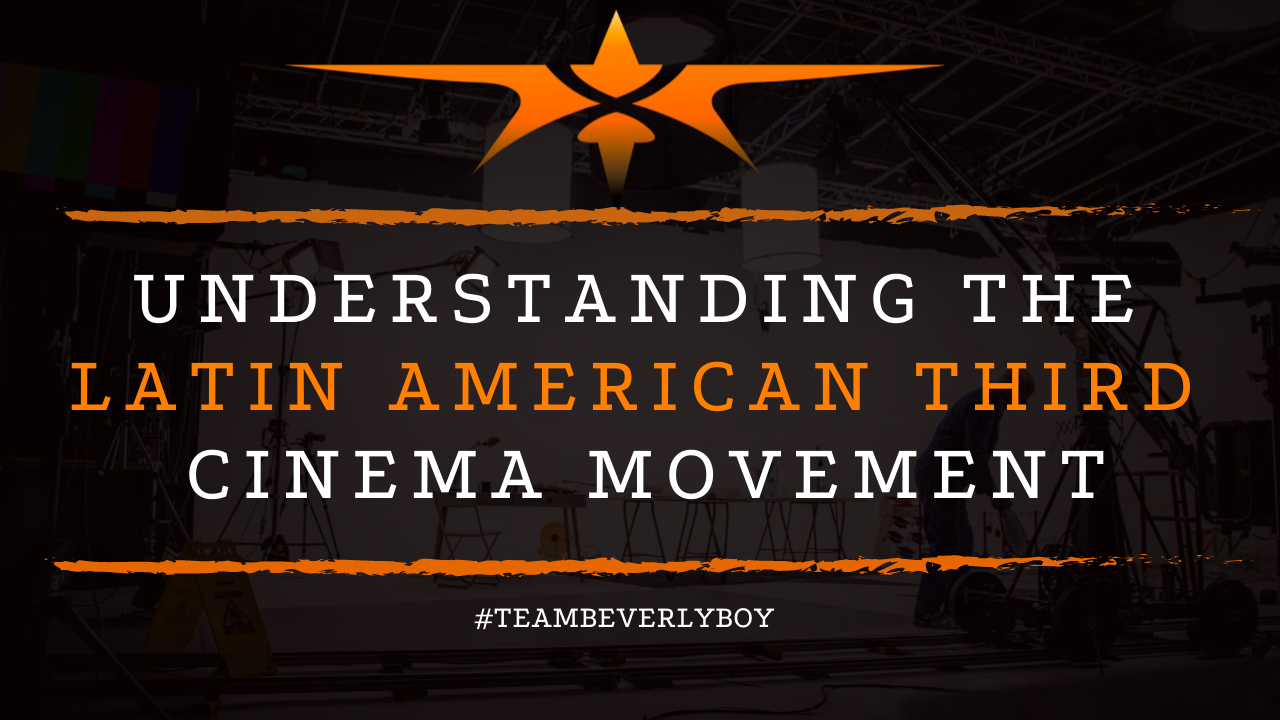
Understanding the Latin American Third Cinema Movement
Frequently called Third World Cinema, the Latin American movement known as Third Cinema represents a political cinematic movement in which films display socially realistic portrayals of life with an emphasis on less discussed topics such as poverty, personal identity, and hidden cultural practices. The Third Cinema movement is believed to date back to the 1960s and represents the beginning of a movement that would ultimately become to be known as Counter Cinema.
Third Cinema filmmakers would focus heavily on topics that were largely oppositional and socially realistic. With an emphasis on the underrepresented topics that traditional Hollywood fails to frequent, Third Cinema comes as an alternative to Hollywood Cinema (First Cinema) and European Cinema (Second Cinema). Although Third Cinema is not only representative of Latin American film, its roots are predominantly Latin American and African.

Origination of Third Cinema
The term, “Third Cinema” originates following the production of a 1968 film, The Hour of the Furnaces by Argentinian producers Fernando Solanas and Octavio Getino. These producers later produced what would become to be widely known as one of the best-recognized Third Cinematic productions. Their documentary film, “Hacia un tercer cine” could be translated into English to mean “Toward a Third Cinema.” This film, produced in 1968, would ultimately be considered one of the best Third Cinematic productions of our time and is recognized worldwide.
Influenced by German dramatist Bertolt Brecht as well as by producers from the British social documentarian era, Third Cinema has roots also in early Marxist theories of production. Filmmakers focusing on Third Cinema often exhibited topics of war, division in society, real and unfortunate events that were frequently omitted from traditional Hollywood filmmaking and largely left out of the mainstream. Rather than focus on propagandist media, Third Cinema produced subject matter that actually connected with a larger audience on a realistic level.
Three Phases of Third World Cinema
An American scholar that was born in Ethiopia by the name of Teshome Gabriel would ultimately identify a three-phase path upon which Third World Countries had produced emerging films. The first phase featuring films which largely bore out of India and heavily focused on traditional Hollywood entertainment topics including the de-emphasis of local subject matter in exchange for technical virtuosity.
Phase two of the Third Cinema would largely focus on local culture and history. These films had a tendency to romanticize the past while they equally neglected social transformation. Second phase Third World Cinematic productions represent traditional ways while featuring heavy local control of production.
In the third phase, production of Third Cinema films shifted from being produced by local elites to those which were produced by the people. Third Cinema of this final phase is an ideological tool that permeates combative, disruptive topics that are not otherwise covered by traditional media.

Third Cinema Techniques
Although Third Cinema is largely representative of the Latin American and African regions, geographical specificity is not necessarily representative of all Third Cinema strategy. Techniques that are used do not necessarily conform to a particular aesthetic strategy, region or device but rather represent whatever techniques are most suitable to the particular subject being represented by the film. Whether techniques are avant-garde, mainstream, or otherwise has little to no bearing on the production in regards to it being Third Cinema.
Third Cinema directors are rarely industry professionals that work full-time in the field. Nor are the artists that perform as actors in Third Cinematic productions. Instead, the professionals that are behind the production of Third Cinema films are often engaging in more of a whistleblower approach to delivering key topics of controversial discussion and in placing emphasis on displaying topics over craftsmanship.
Notable Third Cinema Films
Over the years many notable Third Cinema films have been produced. With the early production of the first “Third Cinema” films previously discussed, several others have since popped up from around the world. A common misconception is that Third Cinema films must be produced or otherwise represent a Third World country which is not necessarily true by any means.
Many Third Cinema films originated from Europe during the 1970s, others would result from African filmmaking in the later years. Most notable are the following:
- The Hour of the Furnaces – a controversial story of Argentine history and politics of the 1960s.
- Three Sad Tigers – an examination of Santiago emphasizing the entrapment of the city.
- Moolaade – Western elements with a critical approach to the culture of Sembene, Africa.
- The Forgotten Hilside – representing the ambivalence of mountain-dwelling characters.
- Handsworth Songs – approaches British race relations through a documentary style.
As you can see, although it is considered that Third Cinema originates in Latin American filmmaking, it certainly isn’t only existing in Third World countries nor do all Third Cinematic productions have roots in the Third World. These films largely focus on touching topics that draw out significance in terms of their subject matter being oppositional and less than mainstream but hardly less than important. They are powerful representations of the importance of representing culture, diversity, and the many deviations from societal norms that are frequently undiscussed though they are representative of large audiences and groups.


